#cape west fishing village
Explore tagged Tumblr posts
Text
I dreamed Cape West Fishing Village had a pirate market.
But it had like nothing to do with pirates, it was just a market centered around old school boat life.
No gps or modern lamps, just fishing equipment and antique boat stuff.
The highlight of the market however was that around sunset there was a floating teater.
Fisherman would sail out people or people would rent rowboats and row themselves out to this big boat that had an outdoor teater on it. Then everyone would watch a performance.
I was only there for the teater. I didnt care about the boat life market.
Im not surprised that dreamed of Cape West.
When I dont play SSO for awhile its always Cape West that I miss first.
13 notes
·
View notes
Text

A nice ferry ride always soothes the soul…
0 notes
Text
Im with you on those two.
Hollow Woods is a place that you often go back to in quests. So its definitely a must to get updated.
I hope its made similar how Wild Woods is like. Filled with plants that make it seem really wild and ancient.
And I hope SSE make Valedale like how its depicted in the comics. Very close to nature and magical. If I remember correctly the houses where on cliffs so the village had levels. I would like that.
And with Cape West I feel like home.
Still dont know why.
But I hope they keep the houses out of wood and with weatherd paint. I dont want it too look newly renovated like Silverglade does
I want it to look like its seen better days. I worry SSE cant really make that happen. Even ruins they made recently is too 'perfect'. They look old, but aesthetic old. Not "wow, this is dirt".
what location are yall most excited to see revamped? I'm torn between hollow woods and cape west!
51 notes
·
View notes
Text
a star stable player and their home stable is something that is actually so personal
34 notes
·
View notes
Text
Hellenistic Alexandria

When Alexander founded in the Nile Delta one of his many Alexandrias in 331 BCE, he would have been overjoyed to know that this settlement would later become one of the cultural capitals of the ancient world—a city that still bears his name today. This location was not entirely unknown to the Greeks. In fact, it was on the nearby island of Pharos, just across the limestone ridge where Alexandria would rise, that Homer situated the abode of Proteus, a prophetic sea god. Nor was Alexandria completely barren; the small Egyptian fishing village of Rhakotis, which would later become one of the city’s neighborhoods, was already established there. The site’s potential as a trading hub was evident from the thriving nearby ports of Canopus and Heracleion.
Researching Alexandria presents significant challenges. One major obstacle is that the city has been continuously inhabited since its founding, which severely limits opportunities for excavation. However, recent archaeological surveys and explorations of the old harbor—now submerged beneath the Mediterranean—have uncovered remarkable treasures and provided invaluable insights. For example, the discovery of several statues depicting Ptolemaic kings as pharaohs has challenged the long-held perception of Alexandria as a purely Greek-looking city. While the predominance of Greek culture is not disproven, these findings add nuance to previously accepted views. Nevertheless, much of what we know about Hellenistic Alexandria still relies heavily on literary sources, such as the writings of the geographer Strabo.
After Ptolemy I Soter gained control of Egypt following the Partition of Babylon in 323 BCE, he initially ruled briefly from Memphis before relocating with his retinue to Alexandria. Under his leadership, the city continued to grow and prosper. Alexandria was organized as a Greek polis and has often been regarded as distinct from the rest of Egypt. This distinction is notably reflected in its later Roman designation, Alexandria ad Aegyptum, meaning "Alexandria by Egypt," rather than "in Egypt."
Alexandria has often been described by ancient authors as being shaped like a cloak (chlamys), stretching approximately 6 kilometers from east to west and only about 2 kilometers from north to south. The city’s neighborhoods were laid out according to an organized grid plan, a design attributed to Deinokrates of Rhodes. Historically, both scholars and the public were quick to regard this type of urban organization as an enlightened Greek invention. However, the Egyptians had been building towns in this manner for centuries. One of the defining features of Alexandria, which astonished its visitors, was its broad streets lined with numerous stoai, giving the sides of the streets the appearance of a continuous colonnade.
The city was dominated by the vast palace complex of the Ptolemies, located to the east of the Great Harbour, primarily on Cape Lochias. This grand district housed the renowned Museum and Library, the tomb of Alexander the Great, and the sepulchers of the Ptolemies, eventually united within a pyramid-shaped structure commissioned by King Ptolemy IV (r. 221–204 BCE). The palatial quarter spanned between one-third and three-quarters of the city's area and included open spaces accessible to the public. These spaces hosted significant festivals, such as the Adonis festival, vividly described in Idyll 15 by Theocritus. Such celebrations were pivotal in nurturing a shared "Alexandrian" identity. Nearby, the Temple of Poseidon and the Theatre on Hospital Hill added to the city's cultural and architectural splendor.
One of the most celebrated architectural projects initiated by Ptolemy I was the renowned Lighthouse on the island of Pharos, designed by Sostratos of Knidos. Over time, the lighthouse became synonymous with the island itself. However, Ptolemy I did not live to see its completion. Beyond its practical function as a beacon for seafarers, the lighthouse served as a powerful piece of state propaganda, symbolizing the might and grandeur of the Ptolemaic dynasty. Later hailed as one of the “Seven Wonders of the World,” the Lighthouse of Pharos stood as a testament to ancient engineering and ambition. Sadly, earthquakes and the subsequent reuse of its materials have reduced this once-majestic structure to little more than its foundations.
Diodoros tells us that in his time (1st century BCE), approximately 300,000 "free" inhabitants lived in Alexandria. According to Jane Rowlandson, this suggests a total population of around 500,000. Most of these inhabitants were of Greek and Macedonian descent. As vividly portrayed by Theocritus in his Idyll 15, many settlers from the Hellenic world initially retained the identity of their mother city during the 3rd century BCE. However, a study by Willy Clarysse (1998) indicates that by the 2nd century, wealthier citizens had begun to develop a distinct "Alexandrian" identity.
In addition to Greeks and Macedonians, many other ethnic groups lived in the metropolis, including Egyptians, who resided in the neighborhood of Necropolis. The hostility and racism prevalent in the city are vividly depicted in the aforementioned Idyll by Theocritus, which describes Egyptians as nothing more than thieves. Another important community in Alexandria was the Jewish population. According to tradition, it was here that the Hebrew Bible was translated into Greek by 72 translators at the request of King Ptolemy II (r. 285–247 BCE). Over time, a significant portion of the Jewish community came to embrace Greek culture, in stark contrast to their northern counterparts, who fought wars to resist such assimilation.
Near the Egyptian quarter stood the Temple of Serapis, also known as the Serapeum. The temple, in its recognizable form, was constructed under Ptolemy III (r. 246–222 BCE). Serapis was a syncretic deity, arising from the combined worship of Osiris and Apis. He was often depicted in a Hellenized style, and tradition holds that Ptolemy I introduced this god to the settlers of Alexandria. The goal was to provide them with a local yet familiar deity they could relate to, in contrast to the traditional Egyptian gods, whose animal-headed forms were alien to the Greek settlers. At the same time, the Osiris and Apis elements in the cult ensured that Serapis also resonated with the local Egyptian population. Over time, Serapis became an immensely popular god, venerated throughout the entire Mediterranean.
Another focal point of Alexandria’s religious life was the dynastic cult. After their deaths, the monarchs of Egypt were venerated as gods, and festivals were held in their honor, such as the Ptolemaieia, the Arsinoeia, and the Basileia. The queens, in particular, were widely celebrated throughout the city.
The will of the Alexandrians was poorly represented in political life, with key institutions, such as the bouleuterion, wielding little power. There is also no evidence of an assembly of the people. The political arena was dominated by the royal family, and understandably so, as Alexandria served as the center of a Hellenistic kingdom. Nevertheless, the people found other ways to express their opinions on matters of public interest. In our sources, riots are frequently mentioned, such as the unrest that occurred after the murder of Arsinoe III. Olivier Goossens
#ancient egypt#archaeology#art history#bookworm#bibliophile#literature#ancient history#ancient greece#ancient greek mythology#hellenism
44 notes
·
View notes
Text
I wish South Hoof had reasons to go there again. Once you complete what little quests they have now, you don't need to ever go back. Yes the new horse breed is only in South Hoof, but other than that, why should I go there? I finished the vet quests, and they don't make new ones. I finished the Madison quests, I don't have a reason to ever talk to her or her family again.
I have the same feelings about other locations too: Jorvik City, Cape West Fishing Village, Redwood Point, Tailtop Village, hell even Dundall. I have no reasons to ever go back to these places, and I wish I did. Granted, I'm not caught up with story quests so I don't know if I'll need to go back there, but as it stands right now, it's kind of depressing how limited my map range is. It's all around the beginning areas. :\
27 notes
·
View notes
Text
Realistically, I would just live where its the rent is the cheapest.
But if I can choose its either Dundull or Cape West Fishing Village.
Theres something with Cape West that feels like home to me. I often miss it and suddenly get such huge need to visit it.
But I have never lived in a village like Cape West so Im not sure why I have such strong feeling for it.
Dundull I love because it so full of history and feel so calm and peaceful. And it being in the forest seem so protective. Living there would be like being embraced by nature and history.
Dundull being surrounded by nature remind me of my grand parents old summer cottage and my god parents second home.
Thanks to everyone who reblogged my last post, means a lot! Let's get started, shall we?
-
My first question:
If you lived on Jorvik in real life, where would you like to stay and why?
28 notes
·
View notes
Text
something that is very dear to me: this witch floating around the lighthouse in cape west fishing village every halloween <3 this is my favourite seasonal decor detail and i go to see her every year. i am so glad that sso still adds her :) i also really liked spider pig, but i have not seen that animal in years... i don't think they add it anymore. if anyone has heard about spider pig please share your knowledge i miss it dearly

have this tiny gif:

47 notes
·
View notes
Text
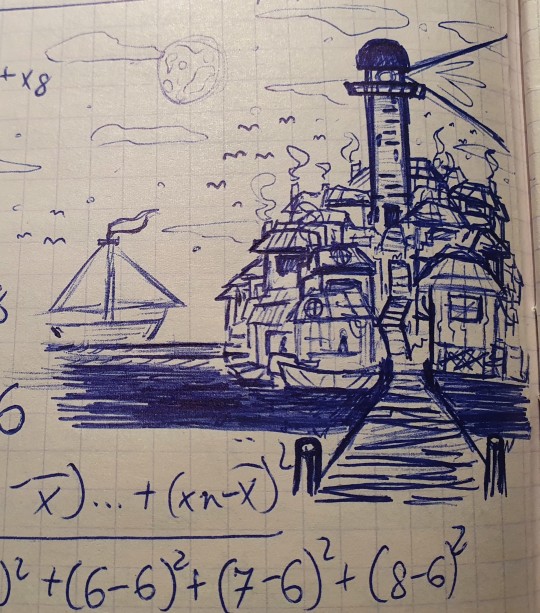
Cape West Fishing Village from my poor memory
80 notes
·
View notes
Text
Things I have done in SSO:
Unlocked and completed Dino Valley
Unlocked Golden Hills Valley (after glitching into it on like. day 3)
Completed all archeaology sets
Got every single spider except for one (see other part)
Unlocked Mistfall
Unlocked Wildwoods
Completed the Nightdust questline (and met Darko through there)
Completed the Avalon questline where you sabotage that dark core base in Valedale
Got Herman caught and then rescued him again (seeing Darko again)
Completed the druid paths in Valedale
On the final chapter of toy postcards
Met Rob and Bob
Things I haven't done in SSO:
Rescued Justin
Even considered rescuing Anne and Lisa
Restored the Baroness's racetrack
Visited pandoria (let me iiiiiiiin)
Met the spymaster (he's holding my last fucking spider hostage)
Got Bob out of the fucking water (requires captain brus to be in his fucking place to talk to) (he's not bc he's in moorland) (bob has been hanging out in the waters outside cape west fishing village for like. three months now)
#calamity be upon ye#sso#honestly i dont even know which parts would be “most” shocking to people who play the game in a linear fashion#this list is also Not chronological#the avalon dark core valedale questline was done Ages ago#golden hills official access is only a few months old and after i completed most other stuff i could
48 notes
·
View notes
Text
New headcanon!
Its a tradition to carve in runes in doorframes of houses.
Similar to the runes thats on rune stones.
New home owners would carve in the runes as a moving-in-good-luck charm.
Its belived to bring good luck to the household.
Its often painted over so its not as visible but the carvings are still there.
Its considered an old wife tale. Some belive it, others doesnt, but its a big part of the Jorvikan culture so it can be seen on many doorframes. Especially on older houses.
Cape west fishing village also have carvings like that on many of the poles surrounding the village and stable.
To protect the village and stable from all the spirits thats inhabit Goldenhills valley under halloween and winter months.
#sso#star stable online#star stable#mina inlägg#goldenhills valley#sso golden hills#cape west fishing village
44 notes
·
View notes
Text
Hey y’all! Say hello to
Ebott~
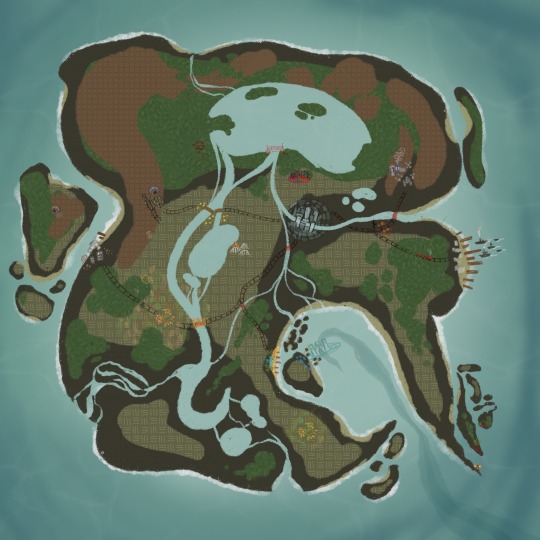
Or at least the first wip of the ebott map! I have all the main (above ground) locations so far!
For those who are wondering, dark brown is rocky hilly land/cliff sides, rusty brown is mountain ranges, khaki is grassland, green is forest, and light tan is beaches obviously lol. I don’t think I need to say what the blue areas represent.
I’ll add descriptions of each landmark below the next picture.
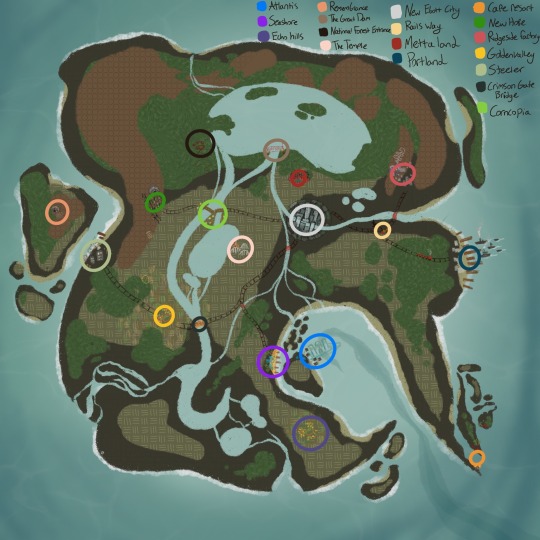
Alright starting from left to right:
Atlantis: home of the hadal monsters, the majority of this city is underwater, but some of it is accessible through the cliffs of bluefin island as well as floating buildings anchored to the shallower ocean around the island. The majority of Atlantis city houses its people in the curved section of the ocean trench by bluefin island. The buildings are carved into the rock.
Seashore: ebotts second largest beach town, seashore is a beautiful place where the majority of ebotts fishing trade takes place. It’s a popular vacation spot more for ebotts residents, but it does get some tourism too during holiday season.
Echo hills: the southernmost city of ebott, echo hills is a small city surrounded by grassy farmland. Due to the location, the place is raining more than not, and is perfect for crops that need lots of water! Echo hills is best known for its rice, producing just enough to sustain ebott.
Remembrance: located to the west on wells island, remembrance town houses one of the maintained entrances to the connected underground’s. It is also the point where the famine monsters were found and rescued. Here the royals placed the memorial of those left behind. Massive stone statues carved all over with the names of family who died underground or were left behind in the crash surround the caves entrance. A small town of monsters maintain the area, and some livestock are raised there as well.
The great dam: exactly what the name suggests, it’s just ebotts biggest dam. It’s part of the national forest so only a handful of maintenance workers and rangers actually live there. The dam is connected to waterfall lake.
The national forest entrance: this is the official way to see the national park, and access the maintained trails. Most of the park rangers live near here as well. There’s a small tourist trap too selling gift items, and farther up is a hunting lodge that opens during open season.
The Temple: located right in the middle of ebott, the actual temple building sits on top of three large mountains near kidney lake. The temple houses ebotts history and is a popular tourist spot. It also houses one of the maintained entrances to the underground, connected to some of the upper levels of waterfall.
NEW EBOTT: the largest city of ebott, and the capital of the county. New ebott has it all! The education, entertainment, shopping and jobs! And of course all the important big government buildings are here as well as most of the royals! New ebott is the only city connected to all the railroads and has the largest airport.
Rails Way: a city surrounding an important train stop, rails way is the in between rest stop between Portland and new ebott. Besides the trains passing through, it also is where trucks in ebott are made and fixed for the most part. There’s a few other factories in the city as well, like a few metal processing plants.
Metta Land: north to new ebott, this is basically a theme park, mega mall, and Hollywood all rolled into one spot. Metta land is so big that there’s even a few villages around it where its employees live. It also houses the only man/monster made entrance to the underground, going straight to hotland of course. What happens in metta land stays in metta land
Portland: this is the second biggest city of ebott located on the east. Almost all trade ships stop here. Portland is a bustling business city full of factories, and has a few houses of education too! It also houses most of ebotts navy and has the second largest airport.
Cape resort: located on the southern rocky cliffs, cape resort is in fact not a resort. It’s rocky, cold and generally horrible to live in if you’re not an aquatic monster lol. However it has an oil rig. Lots of hadal and sea monsters live there maintaining that oil rig.
New hope: new hope is a beautiful mountain town housing the entrance to snowdin, the largest entrance to the underground. It gets the largest amount of tourists year round and is a popular ski location during the winters as well. The parts of new hope that aren’t for tourists are mostly farmland or forests put aside for logging. Plenty of vineyards are in this area
Ridgeside factory: Ridgeside factory is ebotts main power plant and is directly connected to the core in hotland as well. It’s surrounded by a few villages too where more outdoorsy monsters live. Those who don’t work at the factory are either from hotland or are miners. The mountains in the area are littered with natural caverns being used as mine entrances
Golden valley city: the golden valley refers to the surrounding farmland, but in the very middle of it is the golden valley city. It is a rural type of place, is where the majority of ebotts produce passes through before being sold, and is a huge art center of the country. Just about everything above ground is grown in the valley surrounding the city.
Steeler city, the third largest city of ebott, steeler is where golden valley ships their produce to be preserved and spread around the rest of the country. Steeler is full of factories and restaurants. The most famous eating places of ebott are located here!
Crimson gate bridge: it’s a massive bridge named after the Golden Gate Bridge in California. This bridge is actually a sunny gold color, but they named it crimson in fear of being called copycats
Corncopia: a third farming community located between the split between white water river, ebotts biggest river. Corncopia is absolutely gorgeous but space is limited so it’s a fight to get any land there. The prime spots are taken by the rich for their homes or by the big wig farmers who cemented their place when the country was first forming
Not listed on the map is the underground! Ebott still has all the underground chambers from when the monsters were sealed away. New entrances to the underground are being discovered each day, and still plenty of monsters live there, preferring the comfort of a home they knew from before. Since there no longer trapped inside, the underground has become pretty comfortable. At least the discovered parts are ;)
I’ll describe the three main areas from smallest to largest
Hotland: hotland is really only a small thin chunk of the underground. A long but thin lake of lava surrounded by rocky chambers makes up the areas of hotland. The most popular spot of course is hotland city, connected to metta land, it’s pretty much the Vegas of ebott these days. The less visited spot, core, is a small town housing the core, connected to Ridgeside factory, and housing several research centers.
Snowdin. Snowdin is actual just the name of the small quaint town close to the underground entrance in new hope. They have year round skiing, and a pretty boat ride through waterfall straight to hotland for tourists. The outskirts of snowdin however have several villages filled with farmers growing magical crops that thrive in the cold temperatures.
Waterfall: it’s estimated that nearly 80% of the underground chambers are waterfall lands. Humid, cool but not frigid, and filled with varying levels of fresh and salt water, waterfall is underneath the majority of ebott, and even extends into the ocean some. Almost all of ebotts magical crops are grown down in the lived in parts of waterfall. It’s because of this area that ebott is self sufficient in feeding its people. Waterfall also houses the fourth and fifth largest cities of ebott; New Shell and Lily pad Fields.
Whew! That was a lot! I’ll probably add more to the map later on, but I think this is good for now
46 notes
·
View notes
Text

Felt like taking some pics of my Tombhoof, Abyssaura
1 note
·
View note
Note
can we get more Hunter lore? 👉👈 niche little blorbo
!! Can't believe my little guy has gained niche blorbo status. I am honored, thank you anon <3
Feels it's important to mention that I'm not a very good writer, and Hunter's entire deal is essentially just me trying to make a character whose backstory is wildly out of place in the girl power sparkly horsie game but still sort of works with the cannon actions of the player character. This is just a hastily thrown together summary of how he winds up in Jorvik. That said, of course you can get more Hunter lore! :^D Sorry this took so long but I had to do some art to go with it :'))
Everything's tucked below since there ended up being a lot more than expected :') I think it's all fairly mild but
Content Warnings: Image 1: Some mild blood
Image 2: (dressed) head injury
Hunter's pre-jorvik summary contains: patricide, improper body disposal, vehicle theft (x5), unlawful operation of motor vehicles, crossing state lines with stolen property, trespassing, breaking and entering, evading arrest, speeding, and other minor crimes. Also some mention of drowning, concussion, and brain damage.
When an attempt to slip away from his childhood home in the dead of night goes awry, Hunter accidentally hits and subsequently kills his father with a stolen car, then does some sloppy short-notice body disposal. It's nowhere near enough to make sure he's not a suspect, but it does ensure that the body isn't found for another week (until the neighbors come by to ask why his father wasn't at church, only to find that the front door's been left wide open and a small family of raccoons have made their home in the kitchen). He makes his way from his old house in rural North Carolina (U.S.) northwards through eight states under cover of night, switching cars three times along the way (once in Virginia, once in Pennsylvania, and again in New Jersey) until he arrives at the coast of Massachusetts.
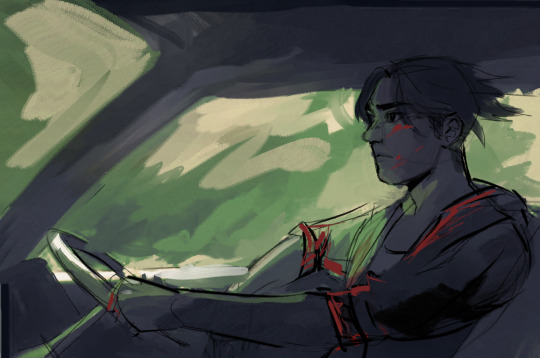
^Hunter, age 19, 5 hours after hiding the body of his father
It's here that (not knowing shit about sailing, boats, or oceanic navigation) he chooses an old pontoon in a private dock to hotwire and sail across the Atlantic with the hope of evading prosecution. Three days into the so-far shockingly successful voyage, rough seas capsize his little vessel, leaving Hunter stranded half-conscious and about two-thirds drowned on some debris until the North Atlantic Current carries him into Jorvegian fishing territory. Five days after accidentally murdering his father, he's spotted drifting on some debris by the crew of a Jorvik fishing vessel and brought back to Cape West where he gets some bearings and starts life anew. :^)
The little pontoon isn't so lucky, and its remains wash up along the coast of Maine nearly three weeks later. By then, it's been connected to Hunter's murder + string of vehicle thefts, and he's presumed to have died at sea in an unsuccessful getaway. In some ways, he did.
Most memories of life before the storm have been wiped clear from his brain, and what little that returns in brief flashes is usually just as quickly forgotten again. Some foggy details of events in early childhood remain, but his entire personality is altered by damage and Hunter becomes someone else entirely, often feeling that he's living in a borrowed body.
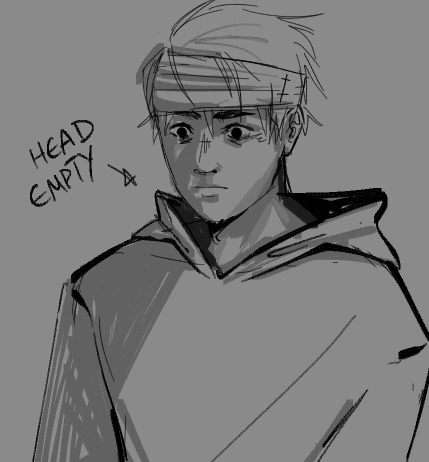
^old doodle of Hunter, age 19, a week after landing in Cape West
Hunter spends about two weeks recovering from a concussion and anoxic brain damage at the fishing club's Cape West bunkhouse before he's well enough to start learning the ropes and work doing some slightly less intensive odd-jobs around the village (fixing nets, processing fish, delivering mail, a little stablehand work at Goldenleaf, etc.). He attends a riding camp in Moorland towards the end of his first year in Jorvik at the suggestion of Mr.Trout, who believes it'll be a good way to get some better ideas of what the horse-loving isle of Jorvik has to offer and find some sense of self beyond Goldenhills Valley.
From here, its essentially the main storyline with some minor changes and seasonings thrown in :^)
#oc asks#sso oc#my art#oUGH THIS ENDED UP LONG. SORRY#there's probably typos and a ton of plotholes and poorly thought out details. I'm just having fun with this guy fr#thank you so much for the ask though anon! This was very fun and inspired some new art :D#Young(er) hunter has short hair! It grows over a year or two and he can't be bothered to cut it :) which leads to his present day design
22 notes
·
View notes
Text
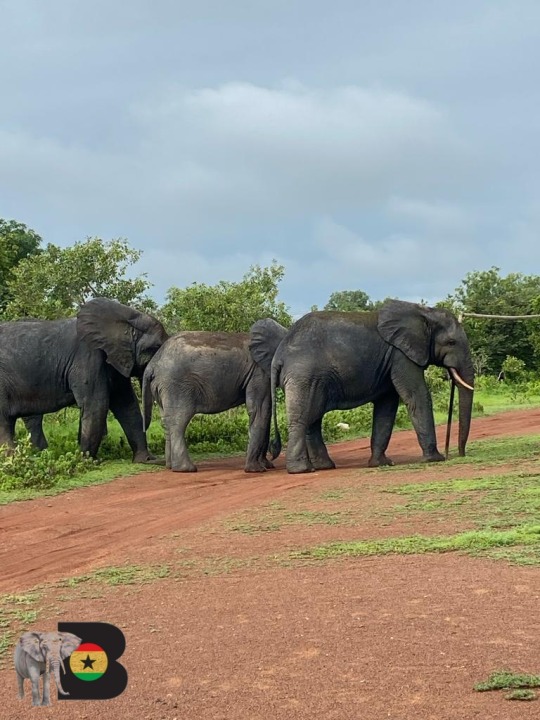
Discover the Essence of Ghana Vibrant Cities, Serene Beaches, and Rich Traditions.
Ghana, a country in West Africa, is a treasure trove of cultural diversity, natural beauty, and vibrant cities. From the bustling streets of Accra to the serene beaches of Cape Coast, Ghana has something for everyone. In this blog post, we'll take you on a journey through the best of Ghana, exploring its rich traditions, stunning landscapes, and vibrant cities.
Vibrant Cities
Ghana's cities are a fusion of traditional and modern culture. Accra, the capital city, is a must-visit, with its vibrant markets, historical landmarks, and nightlife. Kumasi, the cultural hub, is home to the Ashanti Kingdom and its rich heritage. Tamale, in the north, is a melting pot of cultures, with a unique blend of traditional and modern architecture.
Serene Beaches
Ghana's coastline offers a relaxing escape from the hustle and bustle of city life. Cape Coast, with its stunning beaches and historic castles, is a popular destination. Elmina, with its picturesque fishing village and beautiful beaches, is another must-visit. Busua, a serene beach town, is perfect for relaxation and water sports.
Rich Traditions
Ghana is renowned for its rich cultural heritage. The Ashanti Kingdom, with its vibrant Kente cloth and traditional drumming, is a highlight. The Akwasidae festival, celebrated by the Ashanti people, is a colorful display of traditional dance, music, and costume. The Ewe people, in the east, have a unique tradition of storytelling and music.
Natural Beauty
Ghana's natural beauty is breathtaking. The Volta Lake, the largest man-made lake in the world, is a stunning sight. The Afadjato Mountain, the highest peak in Ghana, offers breathtaking views. The Wli Waterfalls, in the east, are a scenic delight. The Mole National Park, in the north, is home to a diverse range of wildlife.
Ghana is a country that has something for everyone. From vibrant cities to serene beaches, rich traditions to natural beauty, Ghana is a destination that will leave you in awe. With Best Ghana Tours, you can experience the best of Ghana, with our expert guides and carefully curated tour packages. So why wait? Book your Ghana tour today with Best Ghana Tours to discover the essence of Ghana!
#bestghanatours#travel#tourism#tour package#ghana#accra ghana#travelwithus#tourist#worldwide privacy tour#summer#all inclusive#accra#activity#tamale#landscape#europe#africa#beauty#nature#wildlife#culture#cape coast#heritage#yearofreturn#beyondthereturn#new york#united states
16 notes
·
View notes